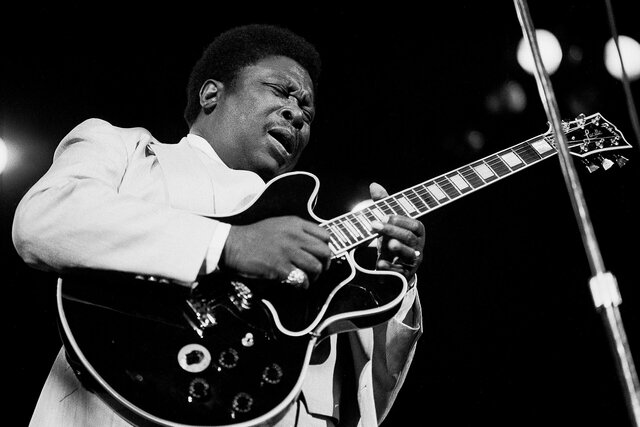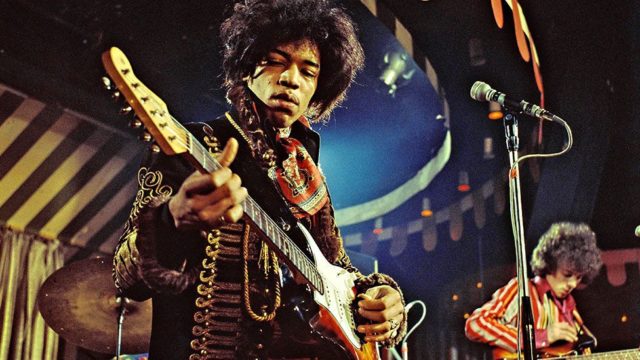Minor Pentatonic Scales The minor pentatonic scale is a beloved and versatile scale that has shaped the landscape of rock, blues, and countless other genres. Its timeless appeal lies in its ability to convey raw emotion and intensity, making it a favorite among guitarists and other instrumentalists. In this blog post, we’ll explore the intricacies...
GuitarMusic TheoryMinor Pentatonic Scales

Minor Pentatonic Scales
The minor pentatonic scale is a beloved and versatile scale that has shaped the landscape of rock, blues, and countless other genres. Its timeless appeal lies in its ability to convey raw emotion and intensity, making it a favorite among guitarists and other instrumentalists. In this blog post, we’ll explore the intricacies of the minor pentatonic scale and provide practical guidance on how to play it effectively. We’ll also delve into song examples that showcase the power and passion that this scale can bring to your music.

Introduction:
Before we dive into the songs, let’s make sure we understand the minor pentatonic scale. The scale consists of five essential notes, which can be thought of as the building blocks of countless iconic riffs and solos.
The scale formula is as follows:
- Root note
- Minor third (three half steps above the root)
- Perfect fourth (five half steps above the root)
- Perfect fifth (seven half steps above the root)
- Minor seventh (ten half steps above the root)
For example, if we’re playing in the key of A minor, the A minor pentatonic scale would include the following notes:
- A (Root)
- C (Minor Third)
- D (Perfect Fourth)
- E (Perfect Fifth)
- G (Minor Seventh)
It’s essential to familiarize yourself with this scale pattern across the fretboard, as it forms the foundation for countless musical expressions. Now, let’s explore how to play the minor pentatonic scale and infuse it with passion.
Playing the Minor Pentatonic Scale with Feeling
- Bend with Purpose: One of the signature techniques associated with the minor pentatonic scale is bending notes. Bending adds expressiveness and emotion to your playing. Start by practicing half-step bends, whole-step bends, and even pre-bends, and pay attention to the subtle variations in pitch. Listen to legendary guitar players like Jimi Hendrix, Stevie Ray Vaughan, and David Gilmour to hear how they bend notes for maximum impact.
- Vibrato: Vibrato is another technique that can make your minor pentatonic scale playing stand out. A controlled, wide, and expressive vibrato adds soul and character to your notes. Experiment with different speeds and widths of vibrato to find your unique style.
- Slides and Hammer-Ons/Pull-Offs: Incorporating slides, hammer-ons, and pull-offs into your minor pentatonic scale passages can create a fluid and connected sound. These legato techniques can be heard in solos by guitarists like Eric Clapton and B.B. King. Practice combining slides with bends and vibrato to create dynamic phrases.
- Dynamics: Don’t play the minor pentatonic scale at a single volume level throughout. Experiment with dynamic shifts, going from soft and gentle to loud and aggressive, and vice versa. Dynamics can add emotional depth to your playing and captivate your audience.
Song Examples
Now, let’s explore some iconic songs that showcase the minor pentatonic scale’s power and passion. These songs will serve as both inspiration and practice material for your own guitar playing.
- “Purple Haze” by Jimi Hendrix

Jimi Hendrix’s “Purple Haze” is a quintessential example of how the minor pentatonic scale can create an electrifying and psychedelic atmosphere. The song is primarily played using the E minor pentatonic scale, and Hendrix’s innovative use of bends, slides, and vibrato creates an otherworldly sonic landscape.
- “Sweet Child o’ Mine” by Guns N’ Roses
Slash’s unforgettable guitar solo in “Sweet Child o’ Mine” is a masterclass in minor pentatonic scale usage. The solo is based on the G major scale, which is closely related to the E minor pentatonic scale. Slash’s emotional bends and expressive vibrato shine in this melodic and powerful solo.
- “Crossroads” by Cream
Eric Clapton’s performance in “Crossroads” showcases the soulful and bluesy side of this scale. Clapton’s use of the scale in this song is an excellent example of how to convey deep emotions through the notes. Pay attention to his tasteful bends, vibrato, and slide techniques.
- “The Thrill Is Gone” by B.B. King
“The Thrill Is Gone” is a blues classic by B.B. King, and it’s a prime example of how the minor pentatonic scale can evoke profound sadness and longing. B.B. King’s signature vibrato and fluid bends are key elements in his expressive playing style.
- “Stairway to Heaven” by Led Zeppelin
Jimmy Page’s iconic guitar solo in “Stairway to Heaven” is a testament to the versatility of this scale. The solo starts softly and gradually builds in intensity, showcasing the scale’s potential for conveying a wide range of emotions. Listen to how Page incorporates bends and slides.
Conclusion
Mastering scales is an essential skill for any guitarist looking to express themselves with power and passion. By incorporating techniques such as bends, vibrato, slides, and dynamic shifts, you can infuse your playing with depth and emotion. The song examples we’ve explored demonstrate how legendary guitarists have harnessed the scale’s potential to create timeless and unforgettable music.
As you embark on your journey to master this scale, remember that practice and patience are your greatest allies. Take the time to internalize the scale pattern, experiment with different techniques, and develop your unique voice as a musician. With dedication and creativity, you’ll soon be able to harness the scale’s power and passion to craft your own unforgettable musical moments.

